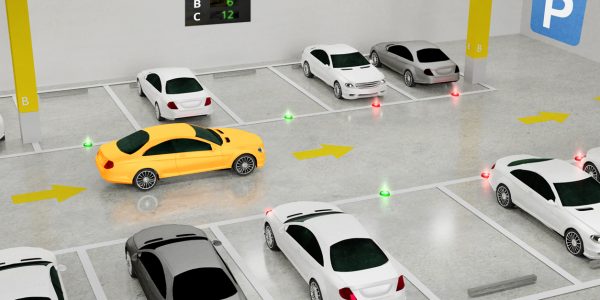The first generation of Smart Parking Ground Sensors hit the market in five to seven years ago. However, these solutions were plagued by numerous problems, including a lack of accuracy, high cost, and issues related to physical integrity and moisture penetration. As a result, the general perception was that cameras and IoT-based solutions were more reliable and cheaper.

Overhead sensors
Overhead sensors are an important part of a smart parking solution. They send information to a control center that analyzes sensor readings. This information is used to calculate the amount of occupancy in each parking space and to prepare information for mobile apps. In addition, these sensors can be used to link other transportation modes to a specific parking space.
Magnetometers can detect vehicles by measuring magnetic fields, but there are several limitations to this technology. For example, the magnetic field of a car varies from one place to another. This means that a car could be parked up to 1m away from a magnetometer and still be detected.
Camera-based solutions
Camera-based parking solutions can help to monitor a large number of parking spaces at once. The cameras must be installed at a height that allows them to view a wide area. This is not always possible, particularly in urban settings with many on-street parking spaces. Additionally, cameras can’t tell whether a parking space is occupied when several large vehicles are parked in the same spot.
In contrast, sensors are more accurate and reliable, but sometimes fail to detect occupied spaces, such as when a car is parked in two places at the same time. Furthermore, they can have some limitations, like a lack of NB-IoT coverage in some areas. However, with the widespread use of mobile technologies, the likelihood of false detection has decreased.
IoT-based solutions
IoT-based solutions for smart parking can provide parking facility managers with a wealth of information and help them plan the future development of their space. They can also improve the overall comfort of city residents by ensuring that parking spaces are available to all. For example, connected platforms can alert drivers of the expiration of their parking time and extend it automatically with a single click. This can reduce traffic law violations and increase revenues for the parking facility.
IoT-based solutions for smart parking can greatly improve a parking facility’s operations. The system can help organizations better manage their customer base while simultaneously reducing greenhouse gas emissions. Many of these solutions are free and can help improve the overall environment.
Cost
The cost of a smart parking solution depends on how many parking spaces need to be monitored, the amount of hardware that needs to be installed, and the connectivity costs. A parking management system can help keep track of all parking spaces and provide real-time alerts about any anomalies. The cost of a smart parking solution can be much lower than you think. The hardware cost may make up less than half of the total cost.
A smart parking solution can help companies reduce their parking costs by increasing their parking revenue. This is possible because these solutions can be implemented in conjunction with a dynamic pricing scheme. This means that the parking fees can be adjusted according to the real-time demand.
Environmental impact
The environmental impact of smart parking systems is important to understand. Having a smart parking solution for your business can reduce your carbon footprint and save time. In addition, it can reduce the pollution in your parking lot. It also reduces fuel consumption and carbon emissions. These are great benefits for the environment.
A smart parking solution can help reduce congestion and pollution in busy cities. Currently, 30% of city traffic is made up of cars looking for a place to park. Moreover, parking can consume more time than needed, increasing your stress level. Smart parking solutions can help reduce the burden on our environment by steering traffic away from city centers and towards public transport hotspots. This will also help improve the air quality in cities and promote sustainability of cities.
These smart parking solutions are designed to reduce emissions significantly. While cars that are moving at a high speed emit less toxins, when stuck in traffic, their emissions increase. Not only does a smart parking solution reduce emissions, it also reduces traffic problems and noise pollution.